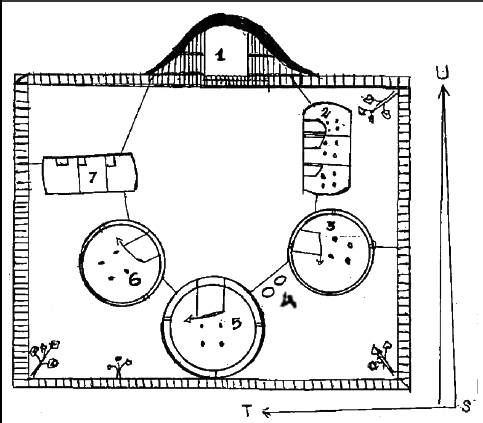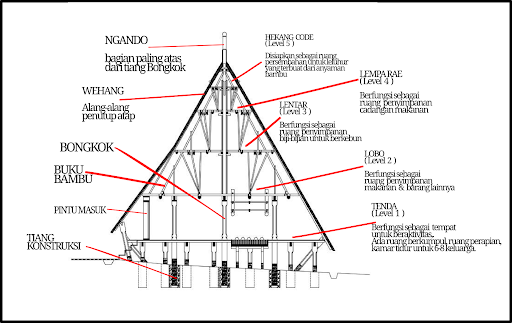Traditional Community Housing
Honai
The Honai house is famous for its round shape. Its materials are weaved woods for the walls and stacks of hay shaped like a cone, sometimes half of a ball, for the roof.
The diameters of the house is usually 4m-6m and 3m-7m tall. Though it might be quite small, inside of the house, it has 2 floor levels. The first floors is the sleeping area, while the second floor is where the hosts’ daily activities occur. Not just for residential, The Honai House is also to keep weapons, crops, and to educate children and planning war strategies. This traditional house actually belongs to The Dani Tribe, from Papua.
The Dani tribe live in groups. Each family has their own housing called silimo. Instead of rooms like normal houses, silimo consists of houses with different functions.
- Musoholak (Entrance)
- Hunila (Kitchen)
- Ebeai (Women’s Quarter)
- Fire Pit
- Honai (Men’s Quarter)
- Pilamo
- Wamdabu (Pig Farm)
Mbaru Niang
Mbaru Niang is the traditional house of the Manggarai tribe, east of Nusa Tenggara. Now, it can only be found in Wae Rebo village. The village has 7 Mbaru Niang, one Mbaru Niang consist of 6-8 families. The houses are laid out circular, surrounding an altar that is located in the middle of the village. The total houses of the village (7 houses(Mbaru Niang)) represent the 7 mountains that surrounds the village.
Like the Honai House, Mbaru Niang also has a round shape but with a tall cone shaped roof. Its height can be up to 15 m tall. The cone roof symbolizes protection and unity of the village, while the round shaped house symbolizes harmony and justice between the villagers. One Mbaru Niang consists of five floor levels :
- Lutur (Living Space)
- Lobu (Storage)
- Lentar (Store seeds for farming)
- Lempa Rea (Store food)
- Hekang Kode (The place of ancestors)
Conclusion
Though, both shapes are similar, their housing system is different due to different tribe custom. The Dani tribe live in groups, each family has their own housing area called silimo. While the Wae Rebo villagers share their houses, one house consist of up to 8 families.
https://www.slideshare.net/anhyrutoers/arsitektur-tradisional-papua-honai
https://indonesia.go.id/ragam/pariwisata/kebudayaan/mbaru-niang-istana-di-atas-awan



